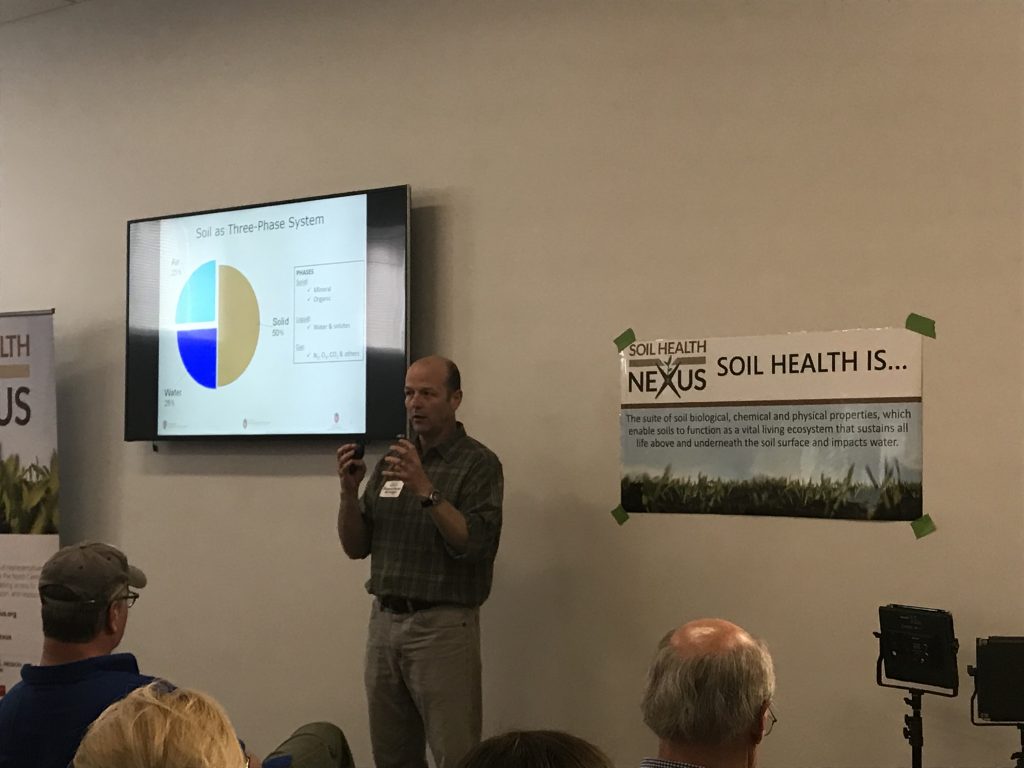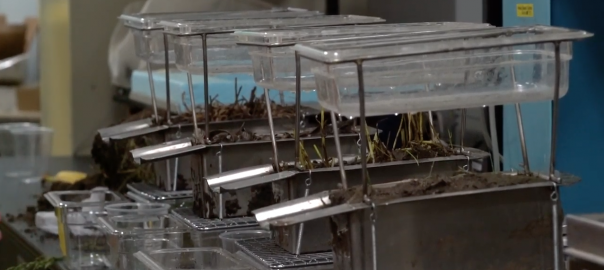New Soil Health Videos
The Soil Health Nexus team recently released a series of how-to videos explaining how to host soil health demonstrations and in-field assessments to help producers learn how to assess soil health on their operations. Videos range in topic from how to do a slump test, or talk to different audiences (such as youth) about soil texture and soil types, to how to do an active carbon test in the field and hosting a soil pit demonstration. Check out the videos on the Soil Health Nexus Toolbox.
The videos were filmed at the ‘How to Teach Soil Health’ field day help at the University of Missouri Soil Health Assessment Center in May. Fifty professionals from Extension, state and federal agencies, and agribusinesses from across the region participated. Attendees were able to get in the field and learn how to conduct a variety of soil health demonstrations and assessments while a videography team filmed the demonstrations.

Francisco Arriaga presents on the connection between soil health and water quality at the “How to Teach Soil Health” Field Day.
Attendees also heard from Francisco Arriaga from the University of Wisconsin Division of Extension on the latest research exploring soil health and water quality, where he discussed how the Soil Health Nexus defines soil health, and got an inside look at the University of Missouri Soil Health Assessment Center and the testing procedures conducted on-site.
In addition to hands-on learning, the Nexus also presented their latest research examining different audiences’ – producers, agronomists, extension agricultural educators, state and federal agency staff, consultants, and soil and water conservation district staff – perceptions of soil health. The survey results are available here.
Results from the post-field day survey show that 72% of respondents feel ‘somewhat’ or ‘very’ comfortable conducting one or more soil health demonstrations and 76% were ‘somewhat’ or ‘very’ likely to change how they present soil health topics or demonstrations as a result of attending. With the soil health videos now available, the team hopes educators who weren’t able to attend the field day learn how to conduct soil health demonstrations and assessments on their own.
